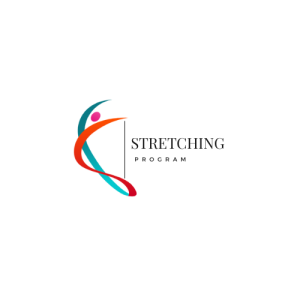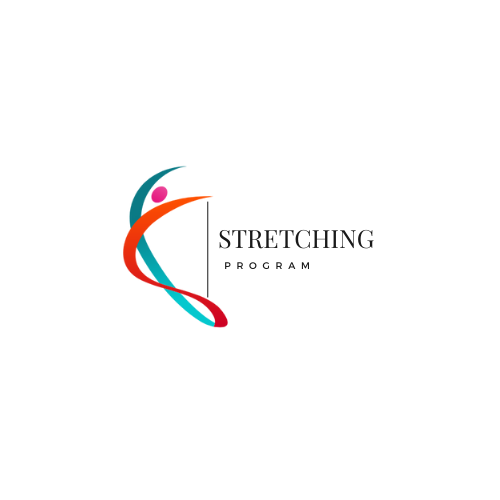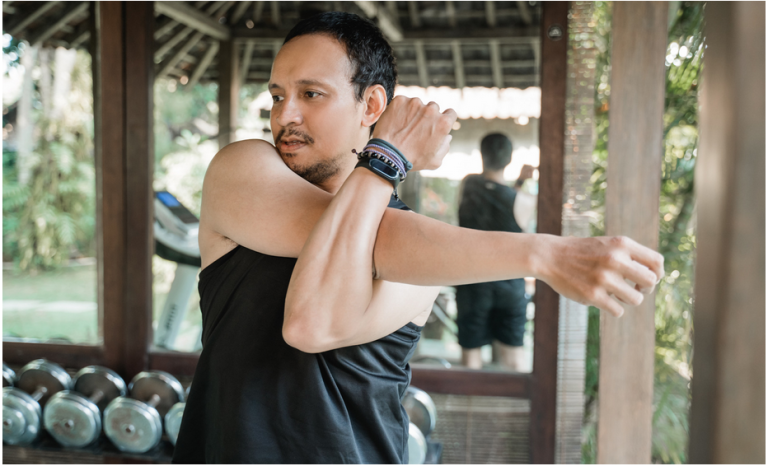
Is Stretching Good For A Pulled Muscle? The Truth Revealed!

Is stretching beneficial for a pulled muscle? As someone who has experienced the discomfort of a muscle strain, I understand how important it is to find the proper treatment. With years of experience in physical therapy and sports medicine, I know proper care for a pulled muscle is crucial for recovery.
But did you know that stretching immediately after straining a muscle may have its benefits? While caution is essential, light stretching can help ease symptoms and aid recovery. So, let’s explore the potential benefits of stretching for muscle strains and learn about the right approach to incorporate this therapy into your healing process. Please pull up a chair as we delve into this topic and uncover some helpful tips!
Key Takeaways
- Stretching right after a muscle pull should be gentle and can help. But doing it too much or the wrong way could hurt more.
- Give a pulled muscle some rest first, then try light stretches if they don’t worsen the pain. Move around to help healing, but be careful not to overdo it.
- It’s best to ask a physiotherapist how to stretch your hurt muscle. They know what stretches work best for healing.
- To avoid pulling muscles, warm up before exercise and do regular stretching. Please don’t push your body too hard; listen when it tells you to stop.
- Follow the “PRICE” steps immediately if you strain a muscle: protect, rest, ice, compress, elevate. This helps start the healing process.
Definition of a muscle strain

We’ve all had those moments when we feel sharp muscle pain during a workout or strenuous activity. That’s what you call a muscle strain, or, as some folks say, a pulled muscle.
Think of it like this: your muscles comprise many tiny fibers, and some can tear when they get overstretched or worked too hard. Ouch, right?
This tearing can happen slightly, which might not feel too bad. Sometimes, the tear is big, and that hurts a lot more. Either way, your body tells you loud and clear with signs like pain swelling up in the area and making it tough to move around like normal.
We must take these warnings seriously because pushing through the pain isn’t smart—it could worsen things!
Importance of proper treatment for muscle strains
Knowing what a muscle strain is, it’s crucial to treat it right. If you hurt your muscles, taking care of them helps stop worse damage and speeds up getting better. We’ve got to protect the sore spot and take it easy for a while.
Staying away from things that make it hurt more is also important.
Right after hurting ourselves, we should follow the “PRICE” steps: We need protection for the injury and rest so it can start healing. Ice reduces swelling, compression keeps everything tight, and elevating the injured part helps.
Sometimes, we might need a brace or medicine like ibuprofen to feel better. If pain hangs around or worsens, that’s our cue to see a doctor quickly.
Symptoms and Causes of Muscle Strains

Muscle strains can cause symptoms such as pain, swelling, and muscle weakness, which may be accompanied by activities that involve stretching or tearing the muscle fibers. Keep reading to learn more about the common symptoms and causes of muscle strains!
Common symptoms of muscle strains
Let’s talk about muscle strains and how we can help them heal. We all know that pulled muscles are no fun—they hurt, and they can make it hard to move around like we normally do.
Factors that can lead to muscle strains
Muscle strains can slow us down. They hurt a lot and make it tough to move around.
- Pushing muscles too hard: Sometimes, we try to do too much, too fast. Our muscles might not be ready for heavy lifting or sudden moves.
- Not enough warm-up: Jumping into exercises without getting our muscles ready can lead to trouble. Warming up helps get blood flowing and prepares our muscles.
- Doing the same thing often: If we repeat the same motion, like swinging a tennis racquet, our muscles might get strained.
- Stretching too far: When we stretch more than our body likes, this can hurt our muscles. We need to know how far is okay.
- Weak muscles: Muscles that aren’t strong enough can give out when stressed. We should build them up slowly.
- Being tired: Working out or playing sports when tired makes injuries more likely. Our body needs rest to stay safe.
- Older age: Our muscles aren’t as flexible or strong as we age. We must take extra care of them.
- Past injuries: If we’ve hurt a muscle before, it’s easier to hurt it again. We need to be careful with those parts of our body.
The Right Stretch Therapy After a Muscle Strain

Stretching is a key component of recovery after a muscle strain, but it’s important to do it properly. In this section, we’ll discuss the importance of stretching for preventing muscle strains and provide techniques for effective stretching post-strain.
Keep reading to learn how stretching can help with muscle strains!
The importance of stretching for preventing muscle strains
Stretching is crucial for keeping our muscles flexible, strong, and healthy. It helps maintain a good range of motion in our joints, reducing the risk of muscle strains. Avoiding long-term stretching is not a good idea to prevent muscle strains and injuries.
Stretching also plays an important role in preventing further injury and scar tissue while aiding newly injured muscles in releasing the body’s natural healing process.
It’s important to understand that regular stretching can help keep our muscles healthy and prevent potential strains. This way, we’re not just reacting to existing issues but actively working towards preventing them from happening in the first place.
Proper techniques for stretching after a muscle strain
The importance of stretching for preventing muscle strains is clear. Now, let’s focus on the proper techniques for stretching after a muscle strain:
Other ways to treat strained muscles
We can use a brace and take anti-inflammatory medication to treat muscle strain effectively. Ice can help alleviate spasms, but it’s important not to apply it immediately after an injury as it may increase healing time.
The R.I.C.E. approach (rest, ice, compression, elevation) is recommended for immediate self-care of a muscle strain. Additionally, increasing joint ranges with light active stretching is advised when rehabilitating a muscle strain.
Taking anti-inflammatory medication and using a brace can significantly assist in treating muscle strains effectively. It’s essential to remember that applying ice immediately after an injury should be avoided, as this could increase the healing time instead of alleviating spasms.
Moreover, following the R.I.C.E. approach (rest, ice, compression, elevation) for immediate self-care of a muscle strain is highly recommended – this includes rest and proper elevation.
Prevention Methods for Muscle Strains

To prevent muscle strains, it’s important to warm up before exercising, use proper form during physical activity, and gradually increase the intensity of your workouts. Additionally, maintaining good flexibility and strength through regular stretching and strength training can help reduce the risk of muscle strains in the future.
Tips for preventing muscle strains
To prevent muscle strains, it’s important to:
Importance of listening to your body
After learning about the tips for preventing muscle strains, it’s crucial to understand the importance of listening to your body. Our bodies often give us signals and signs when something is not right.
Ignoring these signs can lead to overexertion, which may result in muscle strains or other injuries. By paying attention to how our body feels during physical activities, we can prevent pushing ourselves too hard and risking a potential muscle strain.
For instance, if you feel sharp pain or discomfort while exercising, you must stop and assess the situation rather than push through the pain.
Furthermore, recognizing fatigue or weakness in specific muscles during workouts can signal that those areas need rest or gentle stretching instead of intense exertion – helping reduce the risk of muscle strain.
Final Thoughts on Stretching and Muscle Strains
When stretching after a muscle strain, it’s important to approach it with caution and care. While gentle stretching can be beneficial in easing symptoms, over-stretching or stressing the injured muscle can worsen the injury.
It’s crucial to listen to your body and consult a physiotherapist for personalized treatment to ensure proper healing.
The potential benefits of stretching for muscle strains
Stretching can help reduce the risk of muscle strains and even aid recovery. It can improve flexibility, increase blood flow to the muscles, and help prevent future injuries.
Regular stretching reduces muscle injuries and increases joint range, making it a valuable part of any post-strain therapy routine.
Incorporating appropriate stretches into your recovery plan can complement other treatment methods, such as rest and ice, helping you get back on your feet faster. It’s important to consult with a physiotherapist or healthcare professional to determine the most suitable stretching exercises for your specific muscle strain to ensure proper healing and minimize the risk of further injury.
Consulting with a physiotherapist for personalized treatment
Consulting with a physiotherapist can help treat muscle strains. They can create personalized stretching exercises that are suitable for your specific injury. These exercises will help improve flexibility and range of motion in the affected area, allowing the strained muscle to heal properly.
Physiotherapy is essential because it ensures you do the right stretches at the right time. It helps you avoid further injury and promotes faster recovery. Working with a physiotherapist will give you tailored guidance on performing each stretch correctly, ensuring you don’t exacerbate the strain or cause additional harm.
So, if you’ve experienced a muscle strain, reaching out to a physiotherapist can make a real difference in your healing journey.
What to do if you experience a muscle strain.
If you experience a muscle strain, remember not to stretch or massage the injured area, as it can worsen the tear. You should keep the injured area elevated for as long as possible and avoid overstretching or overexerting the muscle.
It’s important to rest the pulled muscle for at least a day if possible and use ice for the first three days after the strain, then consider heat or ice for pain relief. Be cautious when stretching after a muscle strain; improper stretching can lead to a longer healing time and further injury.
Conclusion
Stretching a pulled muscle should be done with caution and under the guidance of a professional. It’s important to remember that immediate stretching after straining a muscle can be gentle and may help ease symptoms.
However, over-stretching or stressing a recovering muscle could worsen the injury.
Therefore, always consult a physiotherapist for personalized treatment if you experience a muscle strain. Additionally, it’s crucial to learn how to properly treat and care for strained muscles to avoid worsening the condition.
Remember, rest is essential for healing, so listen to your body and give it the proper time to recover.
In summary, while stretching can benefit muscle strains correctly, caution and expert guidance are paramount in its implementation for optimal recovery.
F.A.Q.s
What helps pulled muscles heal faster?
To heal a pulled muscle fast, give it some rest, gently stretch it after a few days, and try a slight massage. Ice can chill out the pain; heat might soothe the sore area later.
What are the three symptoms of a muscle strain?
If you’ve got a muscle strain, you’ll surely feel pain and notice swelling or bruising, and using that muscle will be tough — like trying to race with your shoelaces tied together!
Should you stretch if you pull a muscle?
Yep! But wait just a bit… Start stretching that pulled muscle gently only after the first few hurt-filled days have passed; go slow so you don’t make things worse.
What not to do with a pulled muscle?
Don’t play hero with it! Avoid going all-out in workouts with that bad boy – letting it rest is key at first. Don’t put heat on it immediately either; think cool thoughts instead.
Can stretching build up my muscles, too?
Well now… Stretching won’t exactly pump your muscles up like lifting weights! It keeps them long and limber, which is awesome for dodging injuries from doing stuff like splits gone wild.
Does icing work wonders for a throbbing pulled muscle?
Are you icing down an angry, pulled muscle? Absolutely! That chilly buddy can calm down red-hot pain and keep the big bad swell at bay early on when things feel pretty awful.



